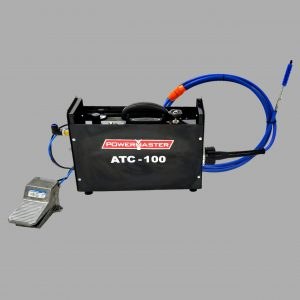Boilers play a critical role in most industrial activities and include energy generation as well as manufacturing processes. In operation, the tubes of the boiler may accumulate soot, scale and other deposits, thereby building up heat exchange inefficiency and hence causing a high level of fuel consumption. Without maintenance, this accumulation can lead to equipment degradation, idle time expenses or even personal hazards. Repair is a frequent best practice and is also necessary to ensure operational reliability. A good boiler tube cleaner machine will rid the solid deposits, resulting in optimal performance and safer boiler usage. Therefore, the primary role in this process is to clean and smooth the system using the appropriate tools.
Tips for Choosing the Right Boiler Tube Cleaner Machine
Having the right machine to clean boiler tubes is a significant issue when maintaining a functional machine. Here are five considerations to reflect on:
- Match the Machine to the Boiler Type: The first thing to do is to identify what type of boiler you are using. They can be fire tube boilers and water tube boilers, and cleaning methods differ between the two. Hot gas travels through the tubes of the fire-type boilers to heat water on the exterior. These are serviced with dry cleaning tools, including a brush and a scraper, which are used to remove ash and soot. Water tube boilers mean that the water flows through tubes.
- Consider the Deposit Type and Severity: A huge determining factor is the type of gunk you are cleaning. Is it loose soot, or hard, crusted scale? Soft deposits such as soot can often be removed using a simple rotary unit with brushes. Light to medium build-up can be removed using nylon or brass brushes. In the case of hard and thick deposits, a more robust machine with a cutter head or a scraper tool is required. These machines use the torque required to dislodge tough scale.
- Know the Tube Dimensions and Material: The dimensions of the tubes of your boiler are important, as well as the material. Determine the inner diameter (ID) of the tubes. The cleaning tool must be the right size to make proper contact with the wall of a tube. Too small a brush will not clean too well, with the possible exception of a cramped area, and too large a brush might have trouble moving. You should also think of the tube material.
- Evaluate Power Source and Portability: Boiler tube cleaning machines are available in various capacities, namely electric, pneumatic (air-powered) and even manual (or hydraulic). The electric models are usual and dependable, but they are not always applicable in wet conditions. Pneumatic machines are also ideal in wet areas or hazardous works, as the machine does not use electricity, minimising the possibility of sparks. They need a compressed air source.
- Check for Additional Features and Accessories: Other machines will do more than spin a brush around. Identify such features as integrated water flush or simultaneous vacuum. These properties save time by flushing out or vacuuming up loosened debris as you clean, preventing clogs in the tube. Variable speed controls can also be quite useful, as you can use varying power on different types of deposits.
Final Words
To sum up, selecting a boiler tube cleaner is important to proper and safe boiler utilisation. A companionable machine enhances heat transfer, which saves on fuel and working expenses. It also prevents premature equipment breakdown and extends the life of boilers by removing corrosive deposits. When using the right tool of the right size on the right tube material and deposit type, it is possible to clean thoroughly without damaging the tube itself. Top manufacturers of Portable Electric Tube Cleaners produce quality products that are easy to operate and have efficient cleaning within the industries where they are used. Therefore, the right cleaner is an important long-term maintenance and reliability investment.

